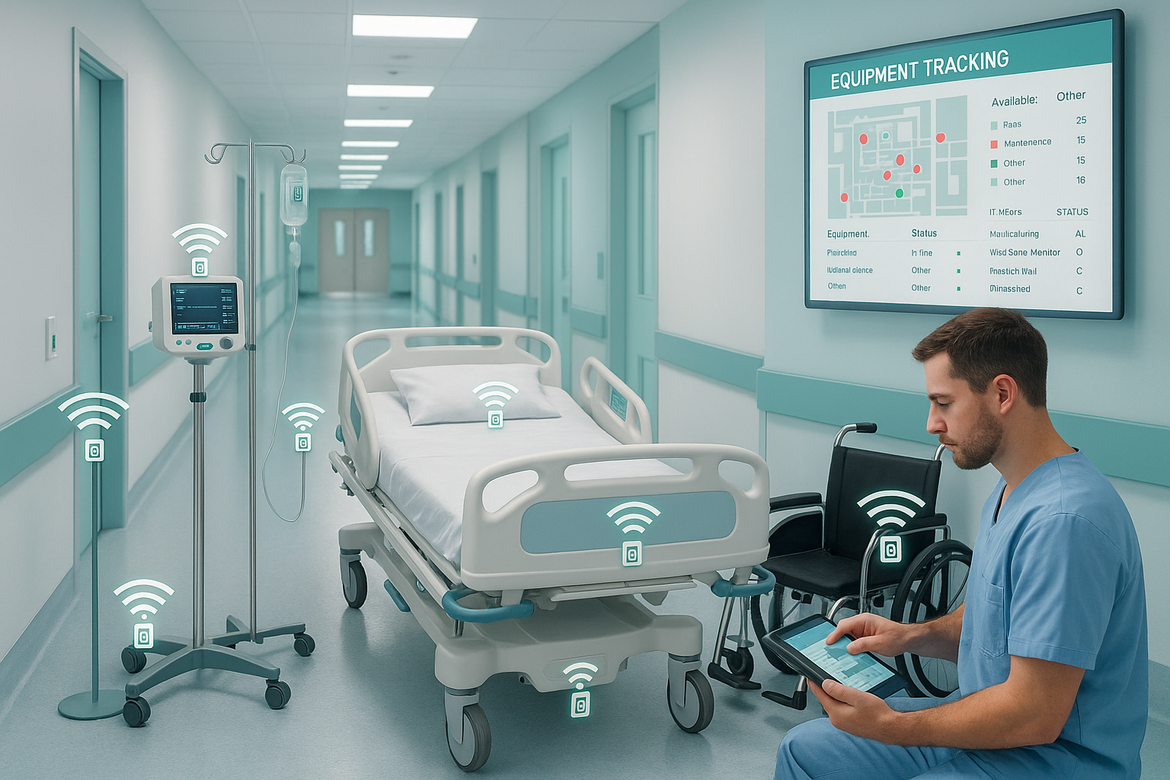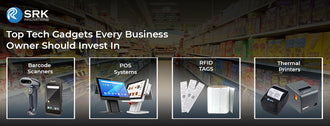
RFID for Hospitals: Track Medical Devices, Beds, and Critical Equipment
- Barcode, NFC Business Cards, Pinter, POS System, RFID, smart cities
- 26 Aug, 2025
In today’s fast-moving healthcare system, hospitals face the challenge of managing thousands of assets every day. From life-saving medical devices to hospital beds and other critical equipment, keeping track of these items is essential for patient care and hospital efficiency. This is where RFID for hospitals becomes a powerful solution.
Radio Frequency Identification (RFID) technology helps healthcare providers know exactly where their assets are, how they are being used, and when they need maintenance. By using tags, readers, and software, RFID creates a smart tracking system that saves time, reduces losses, and improves patient safety.
Why Hospitals Need RFID
Hospitals are busy environments. Staff must move medical equipment from one ward to another, patients often shift between departments, and assets like wheelchairs, infusion pumps, and beds are in constant use. Without proper tracking, many hospitals face problems such as:
- Lost or misplaced equipment
- Wasted time searching for devices
- Unplanned delays in patient care
- Higher costs due to duplicate purchases
Healthcare asset tracking with RFID solves these problems by giving hospitals real-time visibility of all their equipment.
How RFID Works in Healthcare
RFID technology uses small tags attached to medical devices, beds, and other equipment. These tags carry unique information that can be read by RFID scanners placed around the hospital. The data is then sent to software that shows the exact location and status of each item.
Unlike traditional barcode systems, RFID does not need direct scanning. A reader can track multiple items at once, even if they are moving. This makes RFID healthcare solutions more efficient and reliable.
Key Benefits of RFID for Hospitals
1. Improved Efficiency
Doctors and nurses no longer waste valuable time searching for equipment. With RFID hospital equipment tracking, staff can quickly locate what they need, when they need it.
2. Reduced Costs
Hospitals often buy extra devices because they believe some are lost. RFID helps avoid unnecessary purchases by showing the actual location of every item.
3. Better Patient Care
When medical devices are easy to find, patients receive faster treatment. This can make a big difference in emergencies.
4. Preventing Loss and Theft
Hospital equipment is expensive. RFID tags help reduce theft and misplacement, protecting the hospital’s investment.
5. Maintenance Management
RFID medical equipment tracking also helps schedule regular servicing. The system can alert staff when a device needs calibration or repair, keeping equipment safe and functional.
Applications of RFID in Hospitals
Tracking Medical Devices
From ventilators to infusion pumps, medical devices are critical for patient treatment. With RFID medical equipment tracking, hospitals can monitor each device’s location, usage, and condition in real time.
Managing Hospital Beds
Beds are constantly moved between wards, emergency rooms, and operating theaters. RFID hospital equipment tracking allows staff to see where beds are available and ensures patients do not face delays in admission.
Monitoring Critical Equipment
Items like defibrillators, wheelchairs, and surgical tools can be tracked with RFID for hospitals. This ensures that essential tools are always ready when needed.
Tracking Patient Belongings and Supplies
Some hospitals also use RFID to manage patient belongings and supplies like gowns, IV stands, and medicines. This helps improve security and reduce mix-ups.
How RFID Healthcare Solutions Support Staff
Doctors, nurses, and hospital administrators benefit greatly from RFID. Instead of manually recording every item, they can rely on automated systems that update in real time. For example:
- A nurse can check on a screen where the nearest infusion pump is located.
- A technician can receive a reminder when an MRI machine is due for maintenance.
- Administrators can see usage reports to plan future purchases.
This level of automation reduces human error and allows staff to focus on patient care.
Overcoming Challenges in Healthcare Asset Tracking
While healthcare asset tracking with RFID offers many benefits, hospitals must also manage some challenges:
- Initial Cost: Setting up RFID requires investment in tags, readers, and software. However, savings from reduced losses and improved efficiency often cover this cost in the long run.
- Integration with Existing Systems: Hospitals may need to connect RFID data with their electronic health records or inventory systems. Modern RFID solutions are designed to integrate smoothly.
- Training Staff: Staff must learn how to use the system effectively. Simple training ensures everyone benefits from the new technology.
Future of RFID in Hospitals
As healthcare continues to grow more complex, RFID healthcare solutions will play a larger role. Future advancements may include:
- Integration with IoT: Devices connected to the Internet of Things (IoT) will provide even deeper insights into asset performance.
- Real-Time Analytics: Data from RFID medical equipment tracking will help hospitals predict demand and manage resources better.
- Patient Tracking: RFID may also be used to monitor patient movement, ensuring safety and improving care.
The use of RFID for hospitals is not just about saving money—it is about improving patient outcomes, supporting staff, and creating a safer healthcare environment.
Hospitals rely on thousands of assets every day, and losing track of them can affect patient care, increase costs, and waste staff time. RFID for hospitals provides a smart, reliable way to manage these challenges. From RFID hospital equipment tracking for beds and wheelchairs to RFID medical equipment tracking for devices, this technology makes healthcare operations smoother and safer.
With healthcare asset tracking with RFID, hospitals can save money, reduce errors, and give patients better care. As technology advances, RFID will continue to transform the way hospitals manage their critical equipment, ensuring that the right tools are always in the right place at the right time.










































